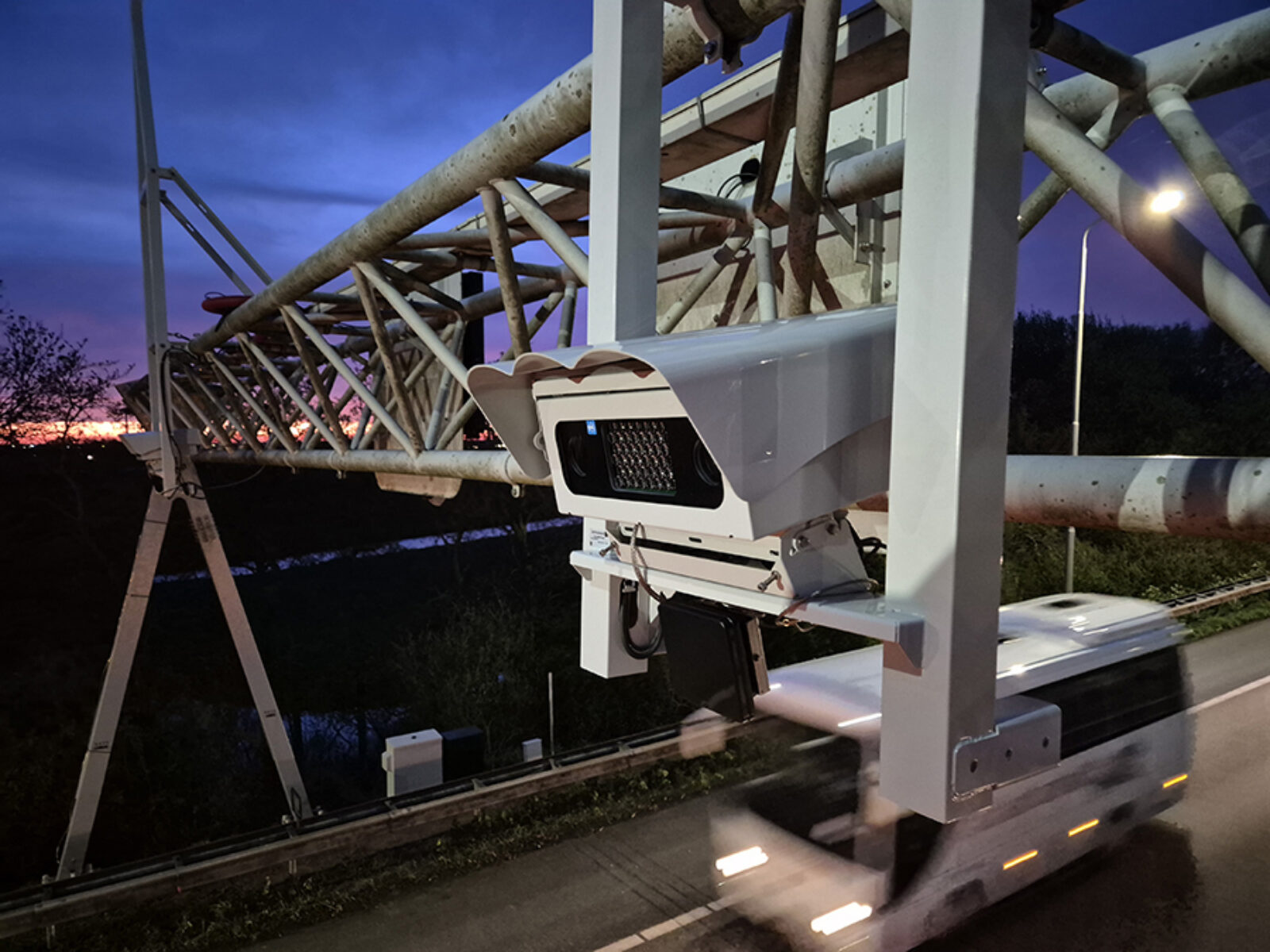
Enhancing public safety through fair and accepted traffic solutions
Section Control Speed Enforcement - Long distance road safety
Section Control
FLUX Intrak Section Control video:
Section control enforcement - how it works
Section control enforcement, often called average speed or point-to-point enforcement, is designed to monitor how long a vehicle takes to travel between two fixed points on a road. As displayed in Figure A at the entry and exit of the controlled section, cameras equipped with automatic license plate recognition (ANPR/ALPR) record passage time and licence plate of each passing vehicle. The system then matches the two reads and calculates the travel time between the two points hence the average speed of the vehicle. This value is then compared to the posted speed limit. Differently from traditional spot speed cameras, the system does not measure short-term speed spikes — such as those that occur during overtaking — but instead focuses solely on the average speed across the section. Another important aspect of the system is that all lanes within the monitored section are mandatorily covered by the camera system. This means that lane changes within the controlled section have no impact on the accuracy & effectiveness of the measurement system.
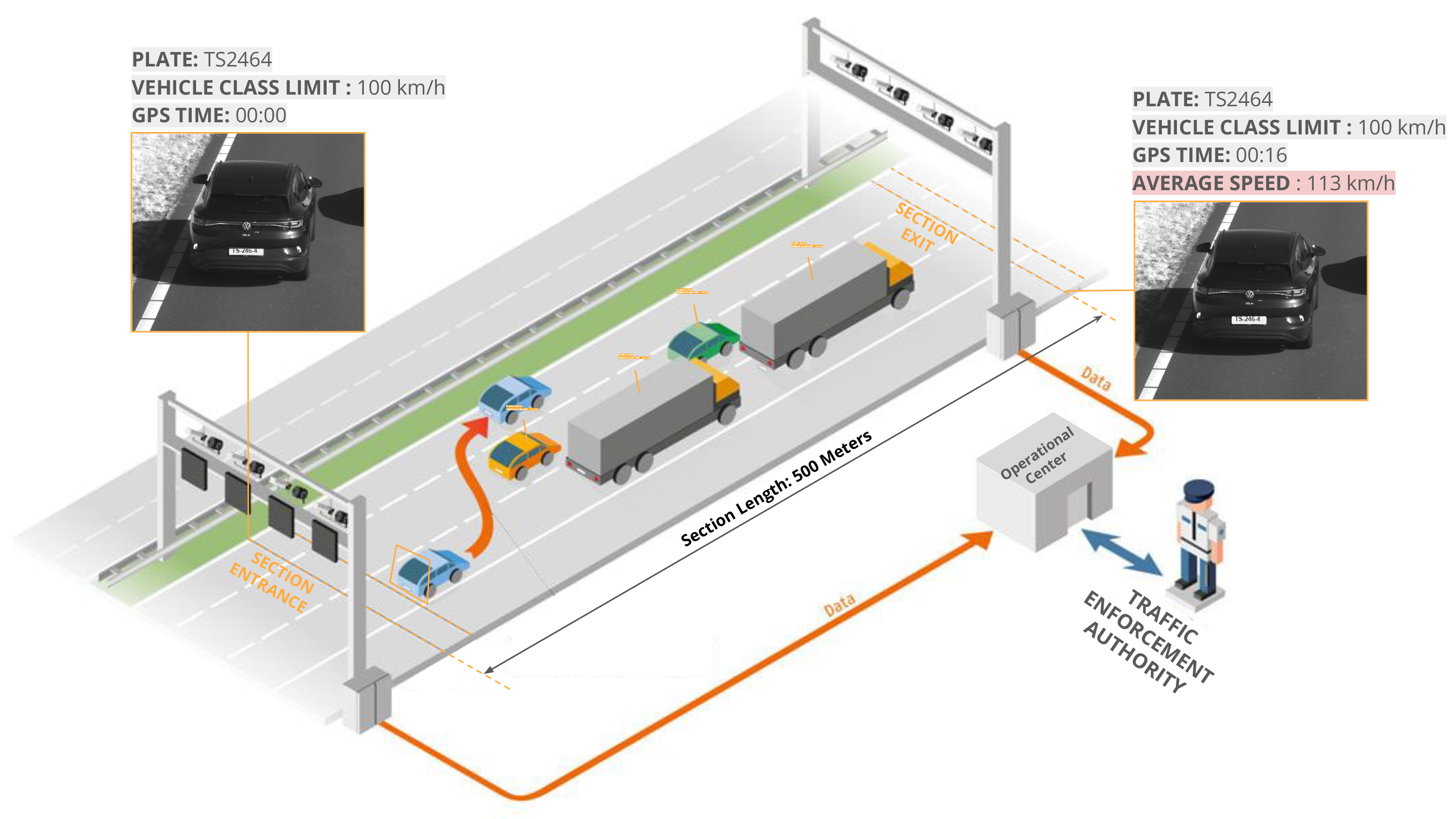
Figure A: Illustration of section control system operation and set-up.
Why Section control is becoming more and more widespread
Section control systems, either independently or in combination with spot speed enforcement, are proven effective at reducing the frequency and severity of accidents on high-speed roads and motorways by lowering average speeds, normalizing speeds across vehicles, and decreasing congestion. [Traditional spot speed cameras are highly effective at reducing dangerous speeding at specific locations with targeted safety needs, including mixed use areas with pedestrians, bicyclists and workers as well as roadways with heightened risk factors. Such locations include, but are not limited to, school zones, work zones, residential areas, commercial districts, parks and high crash corridors]. Three key benefits are specifically linked to section control deployments:
- Increased safety : The impacts of dangerous driving rise exponentially as speeds increase, making section control solutions particularly effective at improving safety on motorways and similar roads with vehicles traveling at higher speeds over longer distances. Section control solutions create an even and smoother flow of traffic, reducing sudden braking and rapid acceleration caused by significant speed differences between vehicles. This results in more predictable driving patterns and safer driving conditions, thereby reducing the risk of collisions.
- Positive Environmental Impact: For vehicles traveling longer distances, section control systems promote a steady and consistent driving style that positively impacts the environment. Studies across Europe (Learn more - Sensys Gatso Academy article) have demonstrated that vehicles traveling at uniform speeds reduce unnecessary braking and acceleration, which directly lowers fuel consumption, greenhouse gas emissions and noise pollution. These effects are particularly valuable in areas where motorways pass through densely populated areas around cities.
- Public Acceptance: Section control systems focus on the average speed across a longer stretch of road, which drivers perceive as reasonable on motorways and similar roads. Evidence from several countries (Learn more - Sensys Gatso Academy article) shows that compliance with section control systems is high, and once implemented, drivers often adapt their behavior voluntarily. This consistency across all lanes further reinforces compliance, since motorists observe that traffic around them is also moving steadily within the speed limit.
Sensys Gatso’s long history of section control implementation: The A2 Motorway section control systems (NL)
The A2 motorway (see Figure B below), connecting Amsterdam and Maastricht, is one of the Netherlands’ busiest traffic arteries, with the section between Amsterdam and Utrecht handling approximately 200,000 vehicles per day. Since opening in 1954, traffic volumes have increased dramatically, creating challenges for both road safety and environmental compliance. When plans were made to expand the A2 from three to five lanes, strict environmental regulations required that noise levels and vehicle emissions remain under control. Since studies indicated that achieving these goals depended on all traffic adhering to consistent speed limits, traditional spot speed enforcement systems were considered insufficient to achieve the environmental requirements.
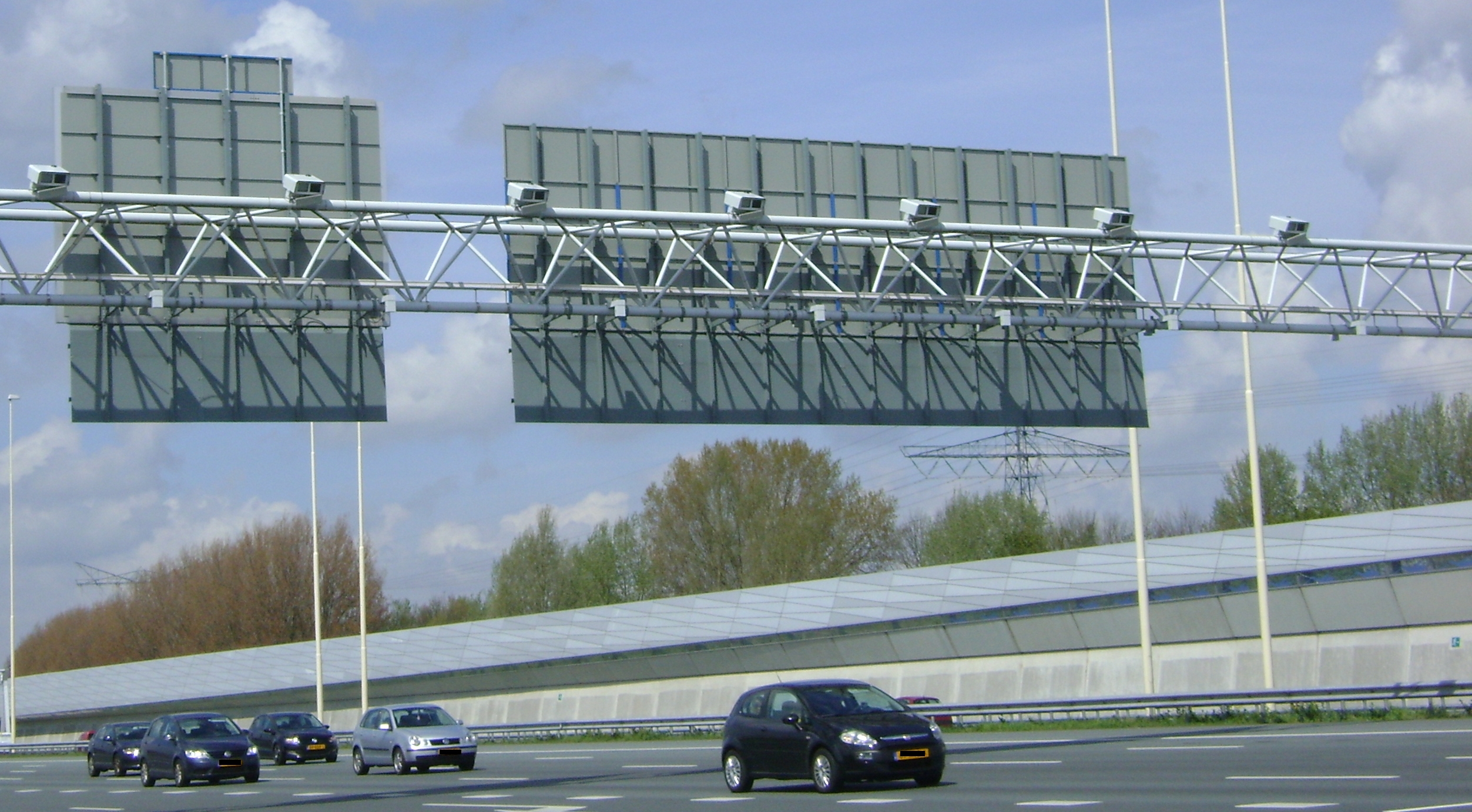
Figure B: First generation Sensys Gatso section control on A2 Motorway (Netherlands).
To support authorities reaching the project environmental goals, Sensys Gatso provided the solution through its Section Control System (Figure B), which measures average speed over km long stretches of motorway. Still in operation after 10 years, the solution proved to be reliable, non-invasive and effective in ensuring a calm, steady flow of traffic. Notably, the system enabled even the enforcement of a variable speed limit—100 km/h during the day and 130 km/h at night. By reducing abrupt acceleration and deceleration, the system not only improved road safety but also lowered exhaust emissions and minimized traffic noise, addressing the environmental concerns of adjacent municipalities.
Section Control
The User Story below gives further details on the experience of the Dutch public prosecuter in working with Sensys Gatso for this project and on the wide-ranging positive effects of the section control system on exhaust emissions, traffic noise, road safety and a smoother flow of traffic.
The new Generation of traffic enforcement platform for Section control: FLUX Intrak
Deploying section control systems on highways is becoming increasingly complex as traffic volumes and road demands continue to rise. Modern highway projects like EG039 issued by Dutch Public Prosecution Service in 2024, bring unique technical challenges that require highly advanced solutions to ensure safety, efficiency, and compliance (Figure C).
- One of the greatest difficulties lies in handling the sheer density of traffic, with daily volumes reaching up to 80,000 vehicles over 2 lanes through the monitored stretches. This immense flow demands systems that can process vast amounts of data in real time without compromising accuracy and evidences’ imagery quality.
- Ensuring that no vehicle is missed or misidentified requires exceptional precision in detection technology. Compounding these challenges are the environmental conditions under which highways operate. Section control must remain reliable in rain, fog, glare, and during both daylight and low-light hours, delivering consistent and indisputable evidence regardless of external factors.
- Another factor is the variability in section lengths, which can range from just 500 meters to several kilometers. Each deployment must adapt seamlessly to these differing requirements while still guaranteeing a uniform level of enforcement quality.
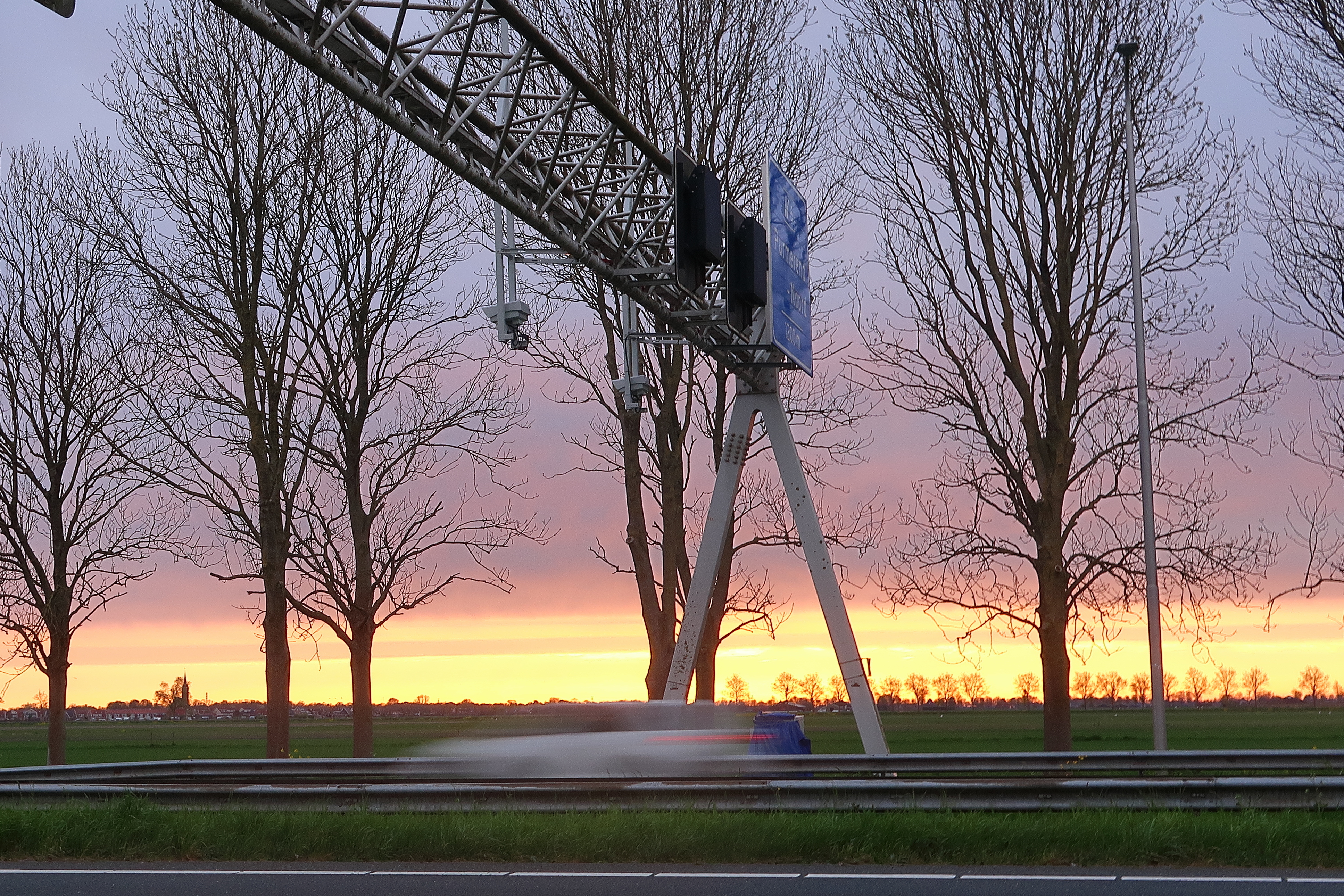
Figure C . FLUX Intrak system installed at A7 highway (The Netherlands).
To continue providing effective solutions that enhance safety on highways and national roads, a robust technological approach was needed. Sensys Gatso addressed these new challenges with FLUX Intrak, its first Section Control systems powered by FLUX.
FLUX is built to give authorities a platform that adapts with them. Its hardware-agnostic architecture works seamlessly with both legacy equipment and the latest technologies, ensuring long-term compatibility and investment protection. As new sensors and innovations emerge, FLUX is ready to integrate them with ease.
FLUX makes large-scale enforcement simpler. Complex data processing can be shifted to the cloud, giving operators full oversight of entire fleets from a single platform. At the same time, edge computing at the roadside ensures real-time and local decision-making without compromising accuracy, even in high-volume traffic.
Every enforcement site is different. With its modular system architecture, FLUX adapts quickly to local requirements — from busy multi-lane highways to urban intersections. Containerized components and standardized APIs make integration simple, while event-driven communication ensures smooth operation with existing back-office systems.
Unique FLUX Intrak Benefits
One of the core strengths of FLUX Intrak lies in its ability to consistently deliver to authorities legally admissible, high fidelity evidence images and accurate automatic number plate recognition (ANPR), even under demanding traffic conditions. High-resolution industrial cameras, combined with additional infrared flash units, ensure that every vehicle is captured with clarity, regardless of lighting or weather conditions. Optimized image quality is achieved through built-in light control, gamma correction, and adaptive flash power, which together guarantee stable imagery with minimal performance fluctuations. By leveraging country-specific ANPR modules trained with AI, the system is able to ensure accuracy in vehicle identification by recognizing variations in license plate formats and characters across different countries. Continuous updates to these modules ensure the system remains precise and effective, even as license plate designs evolve, see Figure D.
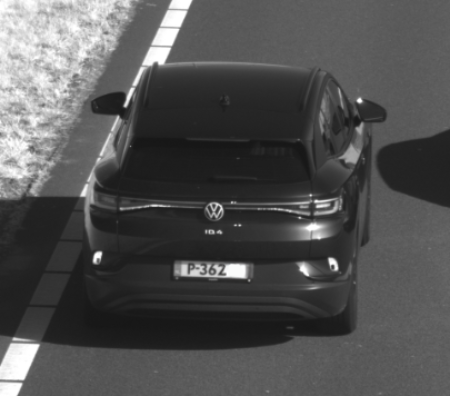
Figure D: Imagery delivered by FLUX Intrak systems for every passing vehicle at the entrance and exit of the monitored section.
At the core of the system is the augmented edge computing capability, enabling radar signal post-processing and roadside decision-making directly at the enforcement site. This approach minimizes the need to transfer large volumes of raw data to central back offices, significantly improving efficiency and reducing latency in enforcement workflows. By handling data enrichment & evidence preparation at the roadside, authorities gain faster insights while maintaining data integrity and security. In addition, the system is optimized for multi-lane monitoring, allowing simultaneous coverage of multiple lanes in dense traffic environments with one system, see Figure E.
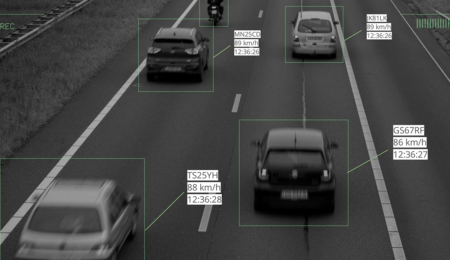
Figure E: Illustration of roadside data acquisition.
Every enforcement location presents its own unique challenges, from road layouts and traffic volumes to environmental conditions and regulatory requirements. FLUX is built with a modular architecture that adapts to these varying demands, offering authorities a flexible and efficient solution for multiple deployment scenarios in both national and highway roads. By leveraging modular components, systems can be rapidly configured and customized with a broad range of cameras, sensors and illuminators to meet the needs of a specific site without requiring extensive redesign. This approach not only delivers a highly adaptable enforcement solution but also lowers operational costs while maintaining reliability. Indeed, the modular design also extends to installation and operation. Flexible deployment options—such as pole- or gantry-based setups—ensure that the system can be integrated seamlessly into different road infrastructures (see Figure F). Features like remote focus, automated updates, and centralized fleet management reduce the need for on-site interventions, minimizing maintenance sessions and avoiding unnecessary disruptions to traffic flow.

Figure F: Closer view of FLUX Intrak system installed on gantry on A7 Motorway (Netherlands).
All-in-One Solution with PULS & Xilium’s sensors & backoffice management solutions
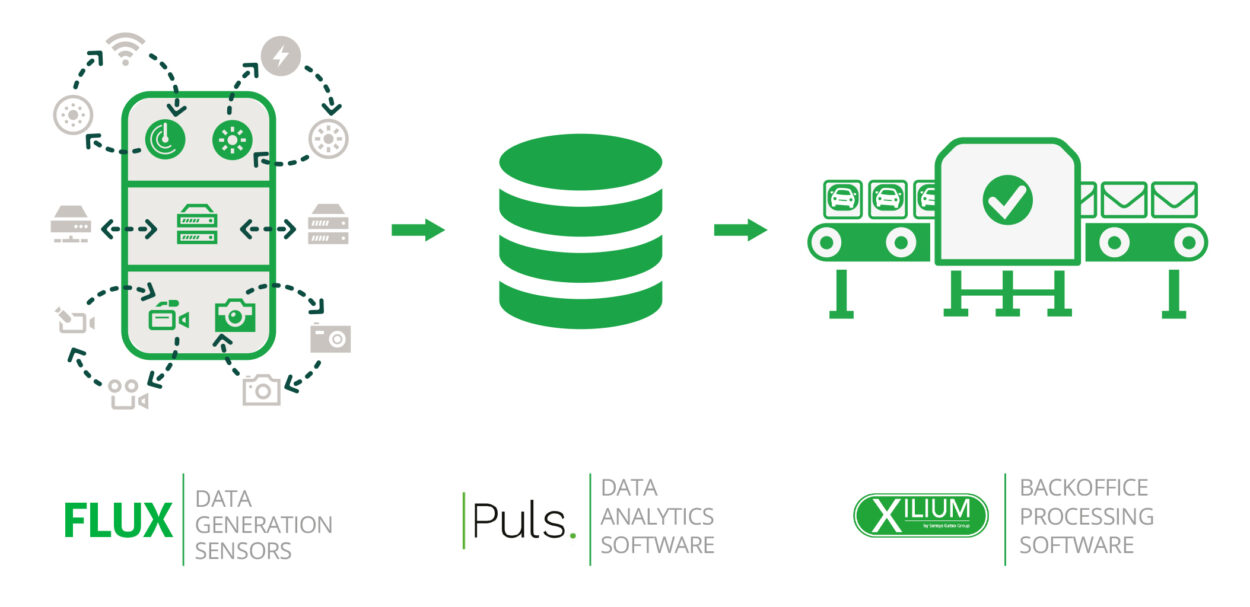
As an all-in-one solution, FLUX integrates seamlessly with PULS and Xilium for TRaffic-as-a-Service (TRaaS), providing a comprehensive platform for all roadside applications. When combined with Sensys Gatso’s Puls sensor management platform and Xilium evidence processing software, FLUX becomes part of a tightly integrated ecosystem. The result: unmatched functionality, stability, and operational efficiency across the entire enforcement chain. This unified system simplifies operations, allowing authorities to manage multiple enforcement activities and different systems from a single interface.
In section control enforcement specifically, FLUX Intrak is designed to capture and process the license plates of all passing vehicles and transmit them to the Central Matching Server in PULS within the back-office system. In case the average speed exceeds the legal limit the associated images and data are retrieved from the roadside FLUX Intrak system, compiled into an incident package by PULS, and it can be imported into Sensys Gatso’s Xilium or any other adjudication platform for review.
